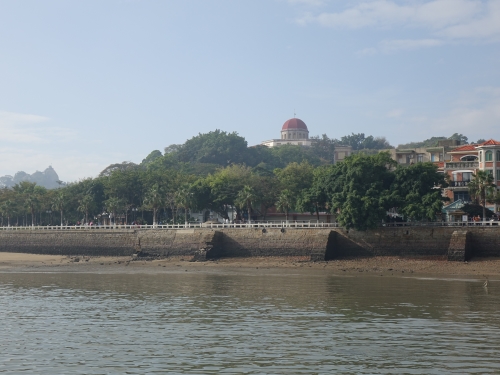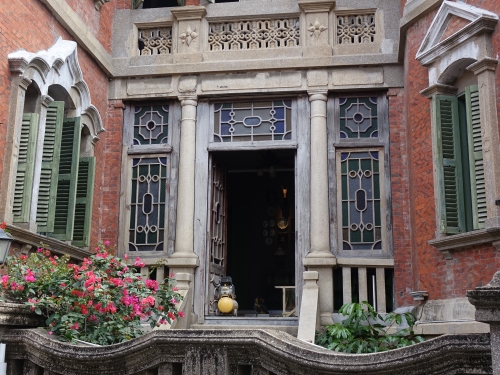Blog WHS Visits
WHS #695: Kulangsu
Kulangsu: a historic international settlement comprises an island off the coast of Xiamen which was inhabited by foreign traders, missionaries and diplomats in the 19th and early 20th centuries. Later in the 20th century it also became home to Chinese who returned from abroad. Together they gave a modern impulse to China through the input of Western culture and technology. The circa 1000 preserved historic buildings show a mix of European, Chinese and South Asian architectural styles.

The island lies really just right off the coast, you can almost swim towards it. The ferry for the local residents also takes only 5 minutes. Tourists have to leave from a location further away though, with a boat that takes longer (20 minutes). There were at least 200 people on 'my' boat, all Chinese. Kulangsu (Gulangyu in modern Chinese) is a very popular destination for Chinese tour groups: there are no less than 13 million(!!) visitors per year. And that while there even is a daily limit on the number of visitors. In the weekends and around Chinese holidays you have to book the boat in advance, otherwise you run the chance that the tickets for the day in question (with a maximum of 50,000!) have ran out.
After arriving at the dock at 8.30 am on a weekday, I could leave with the 9.10 am ferry. The first boat of the day is at 7.10 am, so there were not many others on the island yet. It is also pretty big and there are no cars allowed, so you can leisurely walk around. I was blessed with a sunny day with temperatures above 20 degrees, so just walking around was a pleasure.

You do not have to look hard for historic buildings: there are a lot of them. What I found striking is that they are hidden behind high fences and walls. Many entrance doors I found also closed - people still live in most buildings. If you already manage to enter one, you will soon find yourself on the grounds of a café. There are a lot of signposts on the island but still I did not manage to find all buildings described as especially interesting in the nomination, such as the Hongning Hospital, the Yanping Complex, the former water supply facility, the building of the former Kulangsu Telephone Company, and the former building of China & South Sea Bank Limited.
The unique architectural style that has developed here on the island is called 'Amoy Deco': Amoy for the local name for Xiamen, and Deco to the art movement Art Deco. It produces houses in brick with Chinese-style ornaments. The island also has 3 Christian churches. These served today as a background for the wedding photos of newly married (or to be married) Chinese couples.

The island is a nice and relaxing place to walk around in good weather. The buildings however are not that interesting to a European person and I found it disappointing that you can not enter anywhere. To me a visit of three hours was enough. A special mention has to be made about the street food: like in Xiamen on the mainland, the food stalls are a real asset of Gulangyu. You can serve me an oyster omelette any day!
Els - 19 January 2019